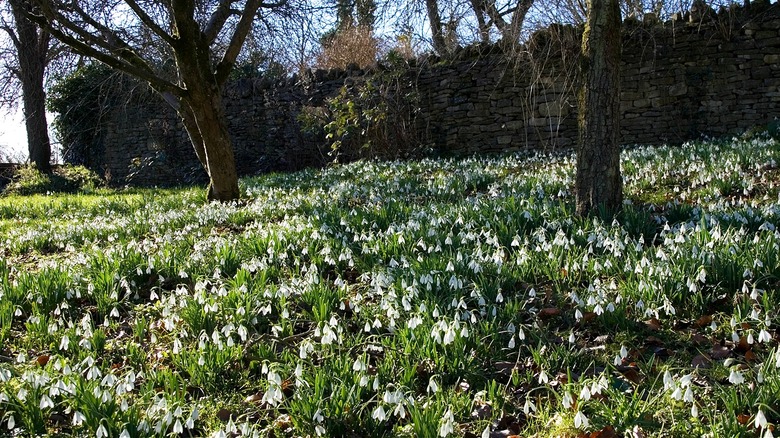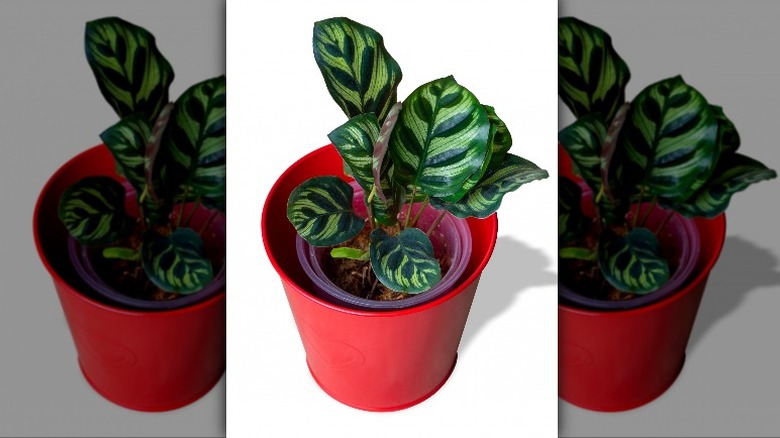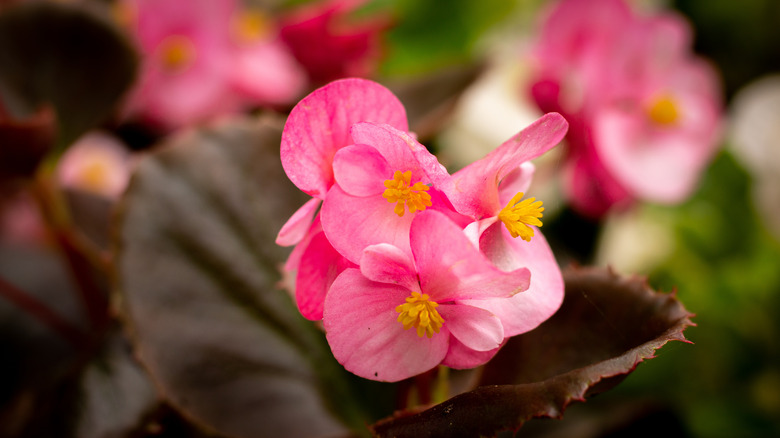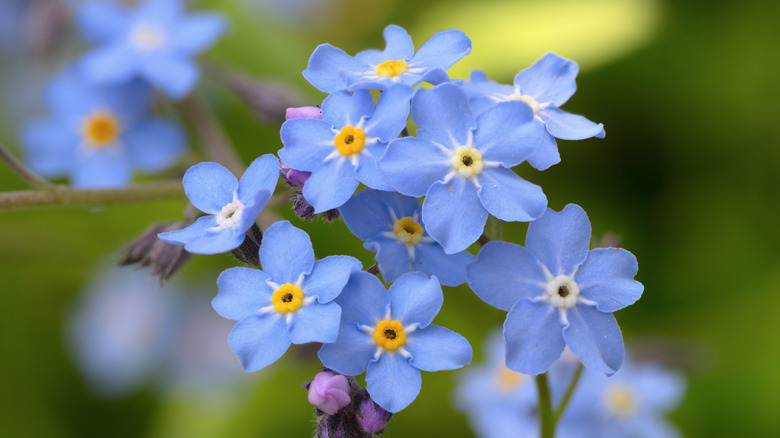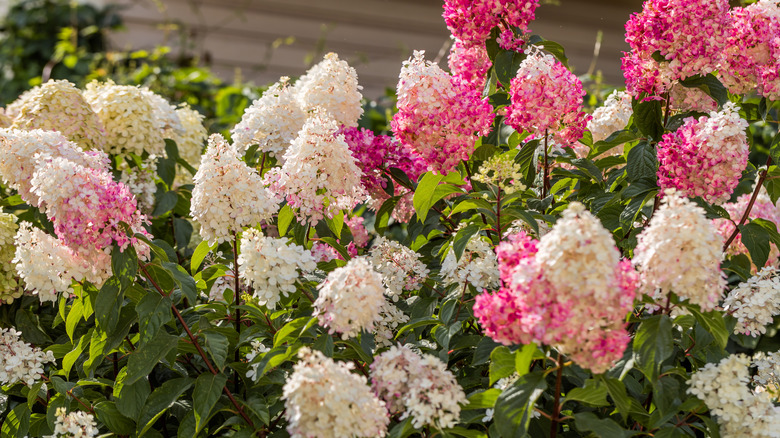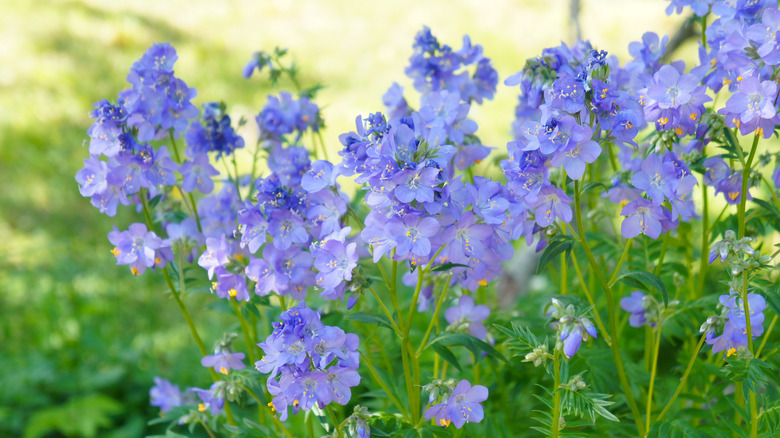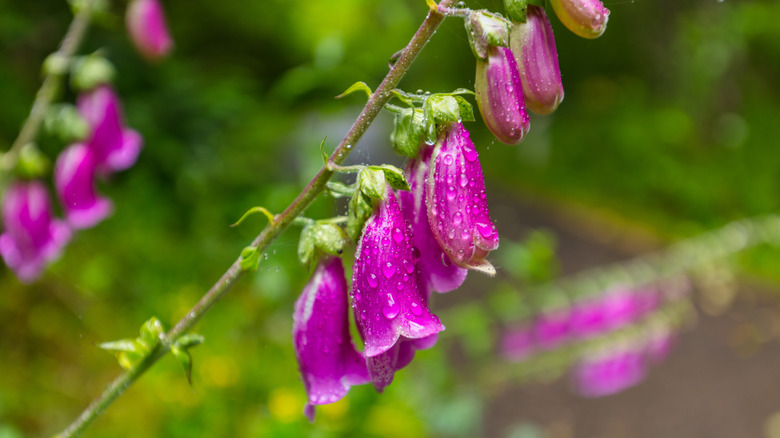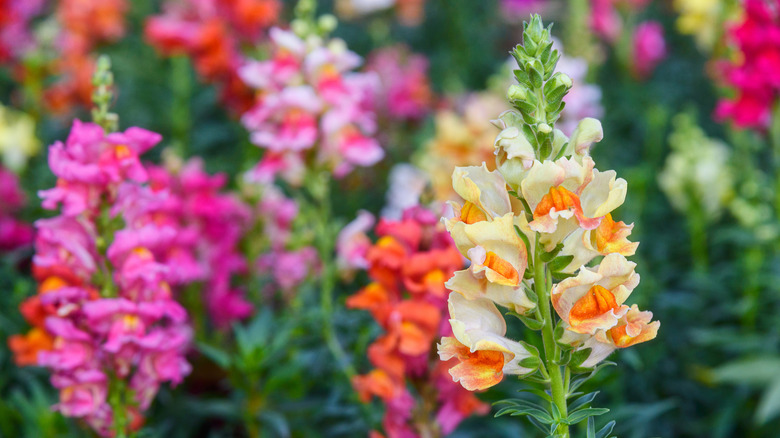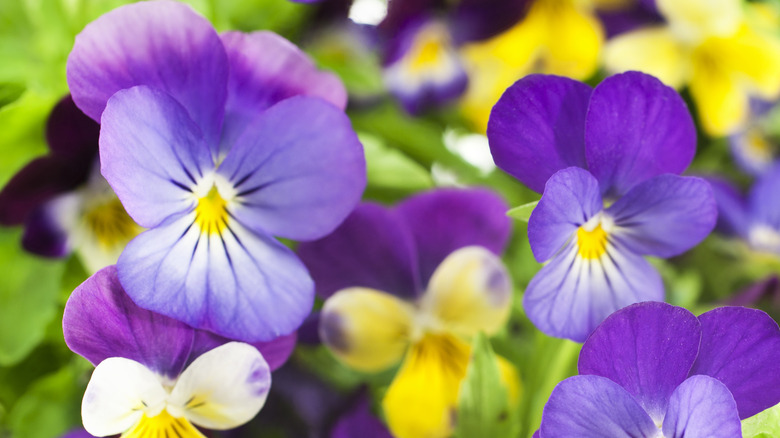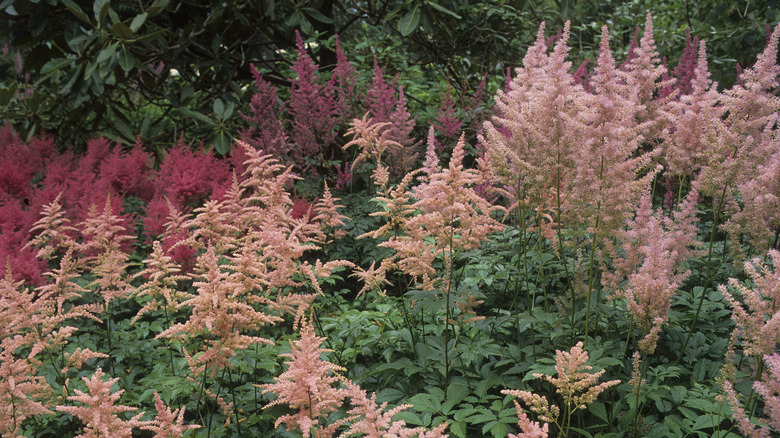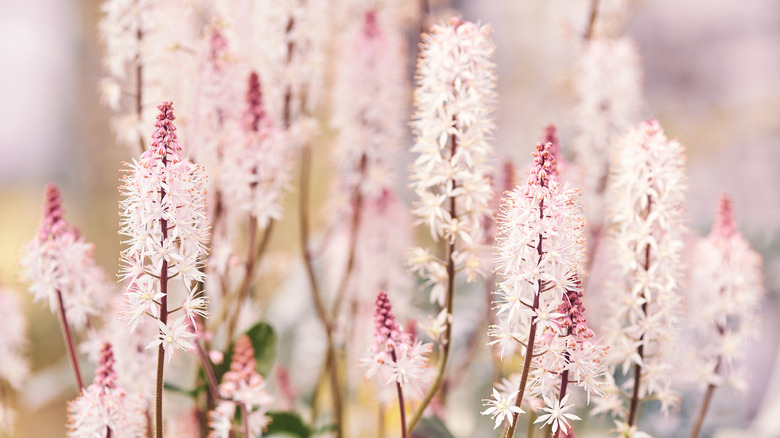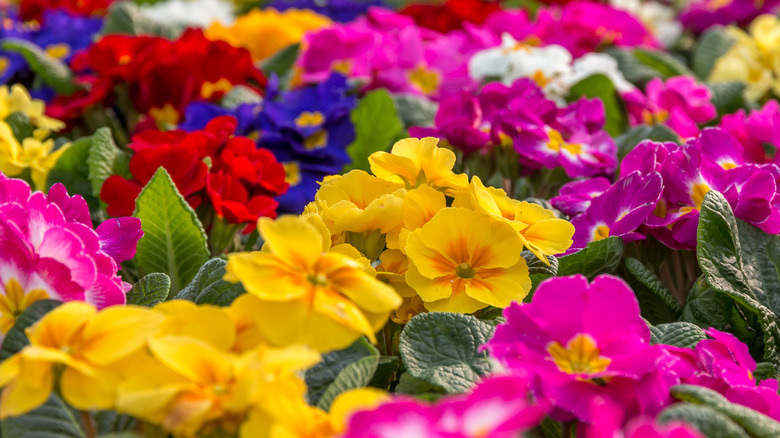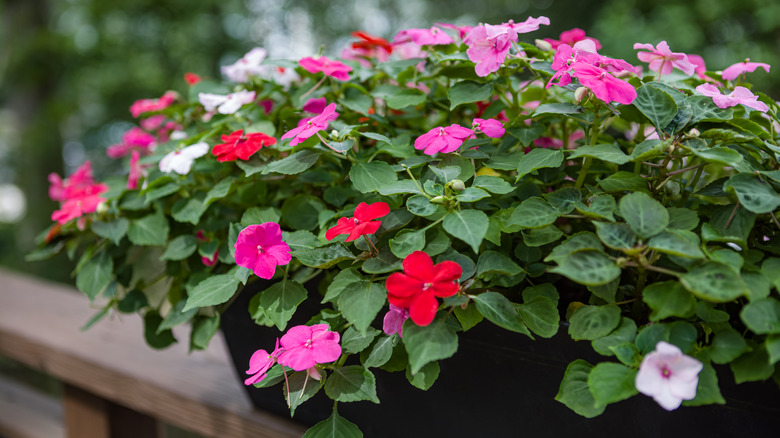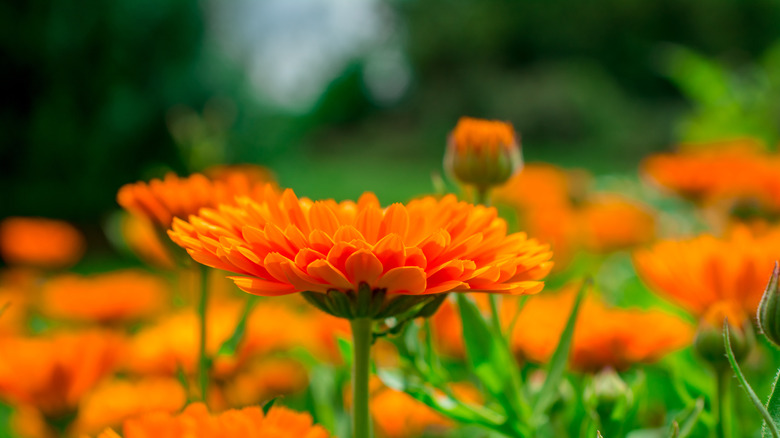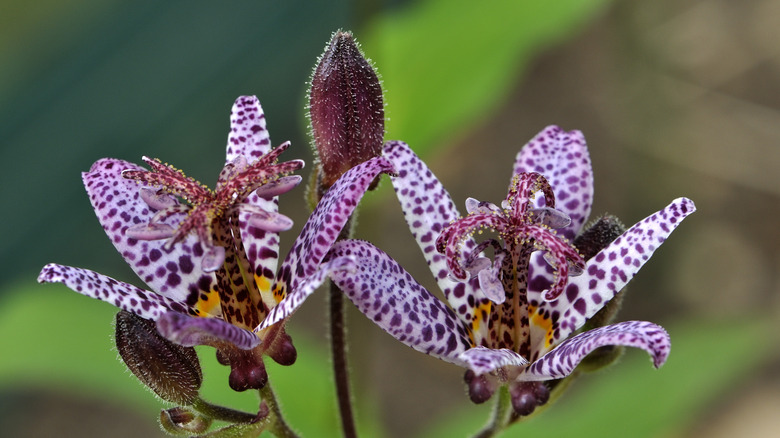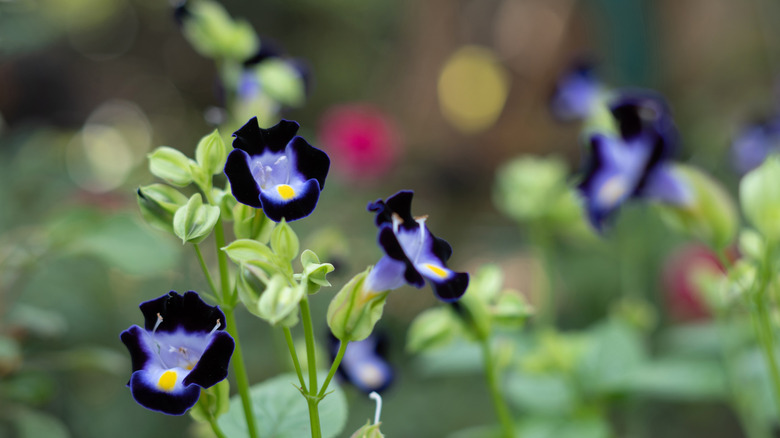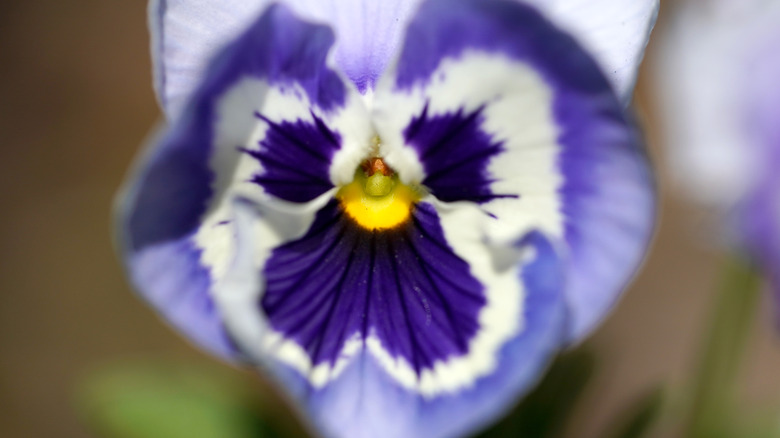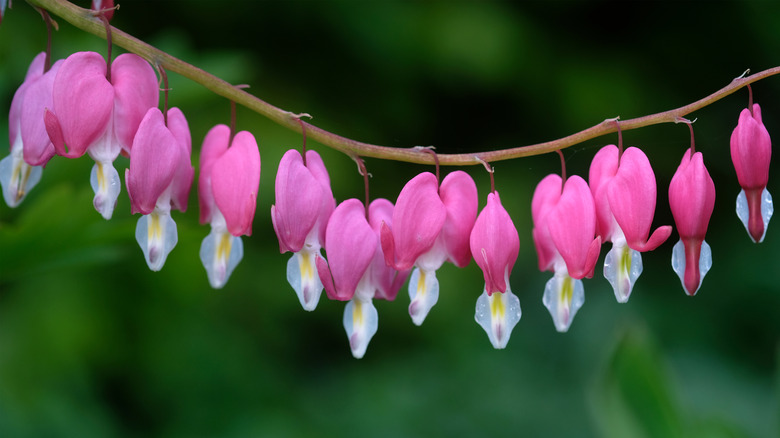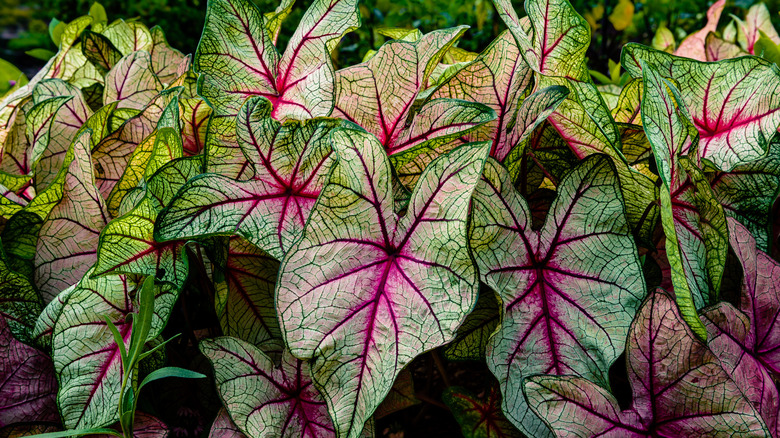18 Pretty Plants That Thrive Without Direct Sunlight In Your Yard
When you picture an idyllic garden, it likely involves a warm day with flowers shining happily in the sun. While this is often the ideal (and easiest) option for many plants, it's not always realistic. Some regions don't get year-round sunny days, and depending on where your garden is located, you might not have an area that the sun can easily reach.
According to Penn State Extension, there are plenty of shade-loving plants that can do really well in the shade or with very little sun. It also notes that while some plants will come with tags that note "full shade," they will all appreciate a little sunshine if possible. If you must cultivate a flower completely sunless, they will still survive just fine — but to truly thrive, it's important you provide at least a small amount of sun if you can.
From pansies to fuchsias, shade plants come in an impressive variety of color and styles, meaning there will be something perfectly suited to your garden style.
1. Peacock plant
The peacock plant (Calathea makoyana) has show-off leaves that make up for its lack of flowers. It features contrasting green and purple-red leaves that bring a lovely tropical vibe to any garden or windowsill. According to Smart Garden Guide, it likes smaller spaces, which means it not only looks great in a garden out back, but also in an apartment garden box or as a houseplant.
Bloom Season: Summer
USDA Growing Zone: 10-11
Growing Conditions: Partial sun, full shade
Soil Type: Moist but well-drained
Size: 4 feet tall
2. Wax begonia
Wax begonia (Begonia semperflorens) is a perennial flower that will provide blooms for your garden year-round. According to Guide to Houseplants, there are approximately 1,000 varieties of begonias, with white, red, and pink being the most popular bloom colors.
Bloom Season: Summer
USDA Growing Zone: 10-11
Growing Conditions: Full sun, partial shade
Soil Type: Rich, moist, and well-draining
Size: 6 to 18 inches high; 6 to 12 inches wide
3. Forget-me-not
Forget-me-nots (Myosotis) are sweet little blooms that appear in clusters and are known for their striking blue color. These flowers are low-maintenance, only needing limited sun, and can add a pop of color to any garden. According to the USDA, another variety of forget-me-nots, known as Alpine, comes in a darker, more brilliant hue if you're looking for something dramatic against your garden's green.
Bloom Season: Spring and summer
USDA Growing Zone: 3-8
Growing Conditions: Full sun, partial shade
Soil Type: Moist and well-drained
Size: 1 foot tall
4. Hydrangea
Native to the Eastern United States, hydrangeas (Hydrangea arborescens) can thrive in many other parts of the country as well. According to Plant Addicts, this plant has a long blooming period — from early spring all the way into the fall. Choose from a variety of colors, including pink, blue, red, white, and even bright green.
Bloom Season: Early spring to late fall
USDA Growing Zone: 3-9
Growing Conditions: Partial shade
Soil Type: Well-drained
Size: 3-10 feet tall
5. Jacob's ladder
Jacob's ladder — formally known as Greek valerian (Polemonium caeruleum) — is a pretty and delicate purple flower that grows in clusters. According to Lurie Garden, it grows and thrives in cool summer climates, and loves to show off not only its petals but its stunning bright green foliage. This plant earns its ladder nickname because of the way it grows and droops downward in the springtime.
Bloom Season: Spring, summer
USDA Growing Zone: 4-9
Growing Conditions: Partial sun and shade
Soil Type: Well-drained
Size: 12-24 inches tall and. wide
6. Fuchsia
Fuchsia flowers are well-known for their adorable bell-shaped blossoms. While most stateside versions don't grow as dramatically, some fuchsia plants can grow up to 13 feet tall in Central and South American nations. According to Horticulture Magazine, this flower is a favorite of hummingbirds, which serve as its main pollinator due to being drawn to its bright colors.
Bloom Season: Spring, summer, fall
USDA Growing Zone: 10-11
Growing Conditions: Partial shade
Soil Type: Moist and well-drained
Size: 1-2 feet tall
7. Snapdragon
Snapdragon (Antirrhinum majus) come in a variety of colors and sizes, with the largest ones stretching up to 4 feet tall. According to Fresh Trimmings, snapdragon petals are edible — they're a popular choice for food and drink garnishes at many restaurants. While they do love the sun, snapdragons will still bloom in the spring and summer if they reside in shade.
Bloom Season: Spring and summer
USDA Growing Zone: 7-11
Growing Conditions: Partial sun
Soil Type: Moist, well-drained
Size: 6–48 inches tall, 6–12 inches wide
8. Pansy
The pansy (Viola x wittrockiana) is such a friendly flower and frequents gardens due to its easy care and maintenance. According to Fun Flower Facts, pansies are one of the earliest bloomers each season, and have an inviting scent that is strongest early in the morning and at dusk. While pansies come in different varieties, their most recognizable feature is their "faces" in their center.
Bloom Season: Spring and summer
USDA Growing Zone: 7-11
Growing Conditions: Partial sun
Soil Type: Well-drained
Size: 4-8 inches tall, 4-6 inches wide
9. Astilbe
Astilbe (Astilbe spp.) make excellent groundcover due to their hardiness and generous spread. Their pink and red cone-shaped blooms contrast beautifully against green foliage in shady gardens. According to Longfield Gardens, astilbes need to be watered regularly when first planted — at least once per week until their root system is well-established.
Bloom Season: Spring and summer
USDA Growing Zone: 3-8
Growing Conditions: Partial sun
Soil Type: Moist and loamy
Size: 6-24 inches tall, 6-60 inches wide
10. Foamflower
Foamflowers (Tiarella cordifolia) get their name from their thick, long blossoms that come in white and pale pink — they look as if they're foaming up off their stems. According to Wild Adirondacks, foamflowers grow natively in the northern hardwood forests of upstate New York. Fortunately, if you live in a mild climate, you can grow them in your own garden.
Bloom Season: Spring to early summer
USDA Growing Zone: 3-8
Growing Conditions: Full to partial shade
Soil Type: Loamy
Size: 1-3 feet tall, 6-12 inches wide
11. Primrose
The primrose (Primula spp.) is colorful and bright, making it ideal for a shady garden that might not see a whole lot of color diversity. According to Eat the Weeds, this flower is native to Europe and is used for everything from potted plant décor to folk medicine. If you put these in your garden and have pets or a lot of native wildlife, take caution — primroses are toxic to animals.
Bloom Season: Spring
USDA Growing Zone: 3-8
Growing Conditions: Partial sun and shade
Soil Type: Moist and well-drained
Size: 6–20 inches tall, 8–20 inches wide
12. Impatiens
Impatiens (Impatiens spp.) is a small but mighty flower with a strong survival instinct. According to Little Flower Hut, if you plant them close together and they get crowded, they'll grow upward instead. They're also impressively self-sufficient; they bloom all season-long and dead-heading isn't necessary since they're self-cleaning flowers. Because of all this work, they've earned the nickname "busy Lizzy" among gardeners.
Bloom Season: Spring and summer
USDA Growing Zone: 10-11
Growing Conditions: Shade or partial sun
Soil Type: Well-draining
Size: 6–36 inches tall, 1–3 feet wide
13. Calendula
Calendula (Calendula officinalis) is a fancy name for a flower you might easily recognize as a marigold. Whatever you call them, these sunny flowers actually like shade. According to Mount Sinai, the petals of marigolds have been used for medicinal purposes since the 12th century. They can be grown both in flower beds and as potted plants, indoors and out.
Bloom Season: Spring, summer and fall
USDA Growing Zone: 2a-11b
Growing Conditions: Partial sun
Soil Type: Moist and well-drained
Size: 1-2 feet tall and wide
14. Toad lily
The toad lily (Tricyrtis hirta) is an exotic-looking plant that will stand out from the crowd of any common garden. According to the University of Wisconsin-Madison, its leaves grow in a ladder-like pattern and are fuzzy to the touch. This is why they're sometimes referred to as hairy toad lilies.
Bloom Season: Summer and fall
USDA Growing Zone: 4-8
Growing Conditions: Shade or partial sun
Soil Type: Loamy, Moist but Well-drained
Size: 2-3 feet tall, 1-2 feet wide
15. Wishbone
Wishbone flowers (Torenia fournieri) are small, delicate, and native to tropical climates. For this reason, they do just fine with rain and shade, although like any flower, they do enjoy at least partial sun. Since they grow out into downward vines, PictureThis suggests they be used in hanging basket planters. Of course, they can thrive in a standard garden as well.
Bloom Season: Spring and summer
USDA Growing Zone: 2-11
Growing Conditions: Partial shade
Soil Type: Well-drained and loamy
Size: 6–12 inches tall, 6–9 inches wide
16. Viola
Violas (Viola spp.) look incredibly similar to pansies, and usually come in their signature purple and white petals with yellow centers. According to Specialty Produce, they're an edible source of vitamins A and C that's available year-round, so they're grown and used by chefs as well as gardeners. They can also help promote collagen production. That's an impressive amount of benefits from a small flower.
Bloom Season: Spring and fall
USDA Growing Zone: 3-8
Growing Conditions: Partial sun
Soil Type: Moist and well-drained
Size: 4–10 inches tall and wide
17. Bleeding heart
Bleeding hearts (Lamprocapnos spectabilis) have incredibly unique blooms. They grow downward in a row and feature heart-shaped petals. Beloved around the world, they also carry significance and meaning to some cultures. While they usually come in pink or red, Just Fun Facts shares that the rarer white variety is a symbol of purity, innocence, and tragic death.
Bloom Season: Spring
USDA Growing Zone: 3-9
Growing Conditions: Shade or partial sun
Soil Type: Moist and well-drained
Size: 1–3 feet tall, 2–3 feet wide
18. Caladium
Caladiums (Caladium) skip the petals and go for big impressive leaves instead. Also known as elephant ears, these leaves have a beautiful design on them, combined with wine red centers. Longfield Gardens recommends caladiums for a shady garden, but they can be grown both indoors and out — keep them in partial shade or indirect light.
Bloom Season: Spring, summer and fall
USDA Growing Zone: 9-11
Growing Conditions: Shade or partial sun
Soil Type: Rich and well-drained
Size: 12-30 inches tall, 12-24 inches wide
